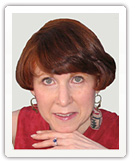e-Tips
Succession Planning & Knowledge Transfer: When Confidence is Lacking in the NextGen
Despite the acknowledgement by leaders and human resource chiefs that succession planning is a top concern and business imperative, much too little is being done about it, especially now as more Baby Boomers inch toward potential retirement and the recovering economy leads to more mobility of talent. There are several reasons, including inertia and wishful thinking that defections to other employers, deaths or illnesses, early retirements or dissatisfaction won’t happen – at least without sufficient notice. Another reason is fear of rocking the boat and the internal politics likely to arise as the succession planning process proceeds. This can be uncomfortable, disruptive and demoralizing to key players if a carefully considered process isn’t instituted.
From our experience, the important obstacles talked about less frequently in organizations whose practice is to choose successors from internal personnel rather than outside hires are lack of confidence in the potential leaders coming up behind the incumbents – as well as leaders, particularly founders, who are too reluctant to “let go.” This article focuses on finding and preparing successors internally.
Based on our observations with clients and coaching assignments, the roots of expressed lack of confidence in naturally assumed successors may have a number of explanations, often distinct from insufficient professional competence including:
- Personal chemistry between incumbent and potential successor, despite clients or other stakeholder’s satisfaction.
- Work style – Incumbent only feeling comfortable with a clone (often not the best choice).
- Incumbent wanting to keep the potential successor with clipped wings to continue in a support role to him or her.
Here are some approaches to use if the potential successor needs more seasoning or the primary obstacle is an inflexible mindset or largely emotional. Factors around “like” and “trust” as well as discomfort with loss of authority and professional identity are often roadblocks. This dilemma suggests at least partly a need for attitude adjustment.
1. Surface what the actual issues are, avoiding stereotyping. Consider conducting workshops and individual coaching on understanding, bridging, and capitalizing on generational differences. Focus not only on the attributes but rather what’s behind them, implications and how to use related strengths.
© Phyllis Weiss Haserot 2015.
Please send your thoughts to pwhaserot@pdcounsel.com or comment on the Cross-Generational Conversation group on LinkedIn.
Phyllis
* The generational chronology for easy reference: Generations are defined by the similar formative influences – social, cultural, political, economic – that existed as the individuals of particular birth cohorts were in adolescence or early childhood. Given that premise, the age breakdowns for each of the four generations currently in the workplace are approximately:
Traditionalists: born 1925-1942
Baby Boomers born 1943-1962
Generation X born 1963-1978
Generation Y/Millennials born 1979-1998
Struggling with how to achieve vital knowledge transfer among the generations? Ask about our highly praised workshop “Avoiding the Cliff: the Relationship Side of Succession Planning and Knowledge Transfer.”
Check out our signature program GENgagenenttm: 5 Things to Know About Each Generation that Will Change How You Interact, Persuade, Recruit, Retain and Sell.
Make sure every day is a Cross-Generational Conversation Dayat your organization.
Contact us to learn about the process, tools, and how your firm/organization can participate in the coming year.
For coaching, training and special programs on inter-generational challenges for and among 4 generations in the workplace, attracting and retaining clients and employees of different generations, and maximizing the potential of young professionals and work teams, call or email Phyllis for an exploratory talk or complimentary coaching session at 212-593-1549 or pwhaserot@pdcounsel.com.
Phyllis is available to speak at your organization or at firm retreats on inter-generational relations and organizational effectiveness topics. Call or e-mail for a list of topics or to custom-tailor your own.

